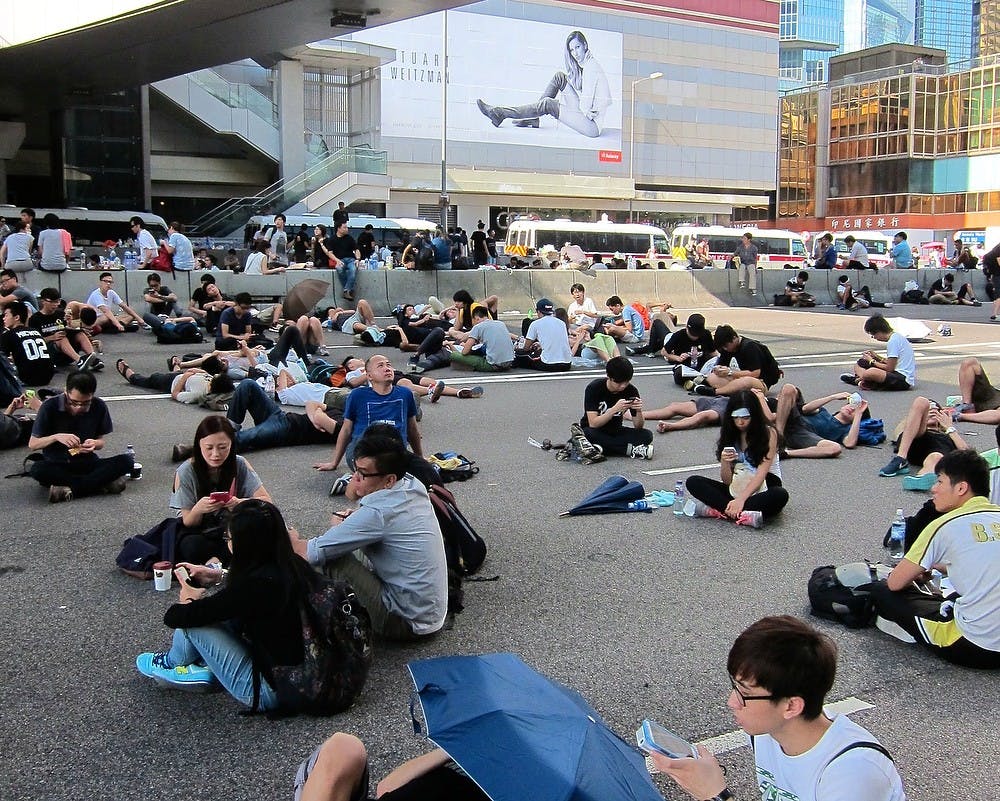Students from Hong Kong gathered for a sit-in by the rock on Farm Lane on Wednesday to show solidarity with their people back home, as protests are putting a halt on the major districts of the region.
“I was completely shocked,” said graduate student William Chung on the situation. “It is something that never happened in the region before.”
Chung, a native of Hong Kong, said one of his friends back home was detained by the police for trying to get into the barricaded area where the protesters were. He was soon released without any charges.
He said the protests were initiated by the Hong Kong Federation of Students, which decided to start a class boycott on Sept. 22. The boycott was started in defiance of the Chinese government’s electoral guidelines for the Hong Kong chief executive elections in 2017.
The Chinese government had previously promised political parties in Hong Kong that citizens would get the right to vote in the elections of 2017.
Protesters have now taken over three main districts, including Hong Kong’s finance district, Central District.
“There would be a public vote, but after a stage of approval (from the Chinese government),” said Mary E. Gallagher, director of Lieberthal-Rogel Center for Chinese Studies at the University of Michigan.
During the last three chief executive elections in Hong Kong, those who got to vote were members of an election committee, which had between 800 and 1,200 people.
Chung said the idea behind the rising number was to have more people gradually participate until universal suffrage is implemented.
Gallagher said the identity in Hong Kong has changed over time, especially since the island was handed back from Britain to China in 1997.
“It’s politically very different,” she said, adding that Hong Kong has many more civil rights than China.
Urban and regional planning junior Ernie Hsieh said also the language and culture are different than mainland China.
Hsieh said he is trying to spread awareness about the protests around campus.
“I’m trying to talk to people around campus,” said Hsieh, a native of Hong Kong. “That’s the one thing that a Hong Kong person can do overseas.”
Gallagher said the students who initiated the movement gave the Hong Kong government a deadline of Oct. 2 for Chief Executive Leung Chun-ying to step down.
She said she does not think it’s likely for the situation to radicalize.
Chung said the main difference between this protest and those the Hong Kong region has seen in the past is that this one has no leader.
“It’s not under the control of any organization because it’s over such a huge scale,” he said. “It’s actually a self-initiated movement by Hong Kong citizens. ”







